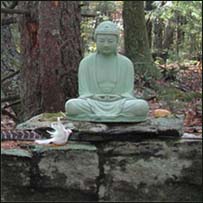|
|
 |
Please support Dharma Seed with a 2025 year-end gift.
Your donations allow us to offer these teachings online to all.

|

|

|
The greatest gift is the
gift of the teachings
|
|

|
| |
|
Dharma Talks
|
2017-05-03
Deepening Daily Life Practice 3--Further Foundational Practices
63:58
|
|
Donald Rothberg
|
|
|
After a brief review of the first two sessions in this series, we explore three foundational practices for deepening daily life practice, first (1) grounding in awareness of the body, and (2) taking challenges (internal and external) as practice. We then explore experientially (3) a practice of stabilizing in mindfulness and then carrying out an activity with as much awareness as possible, then returning to mindfulness, then bringing awareness to another activity.
|
|
Spirit Rock Meditation Center
|
|
|
2017-04-30
Radical Compassion – Part 1
58:27
|
|
Tara Brach
|
|
|
Compassion is the medicine we most need as individuals and a species to heal suffering and free our spirits. The essence of compassion for ourselves and others – what I call Radical Compassion – has three key elements: it is an embodied experience (a felt sense of tenderness), it is inclusive all beings, and it naturally moves us to act from a caring heart. This two-part talk explores the alchemy of Radical Compassion and guides us in awakening this intrinsic expression of our evolutionary potential.
A talk given on 4/30/2017 at the IMCW Spring Retreat
|
|
Insight Meditation Community of Washington DC
:
2017 IMCW Spring Retreat: Intimacy with Life
|
|
|
|
|